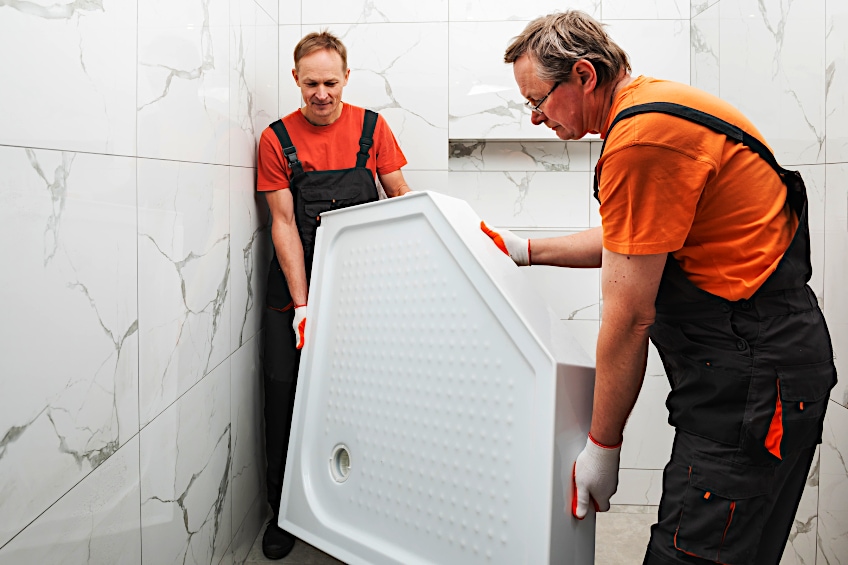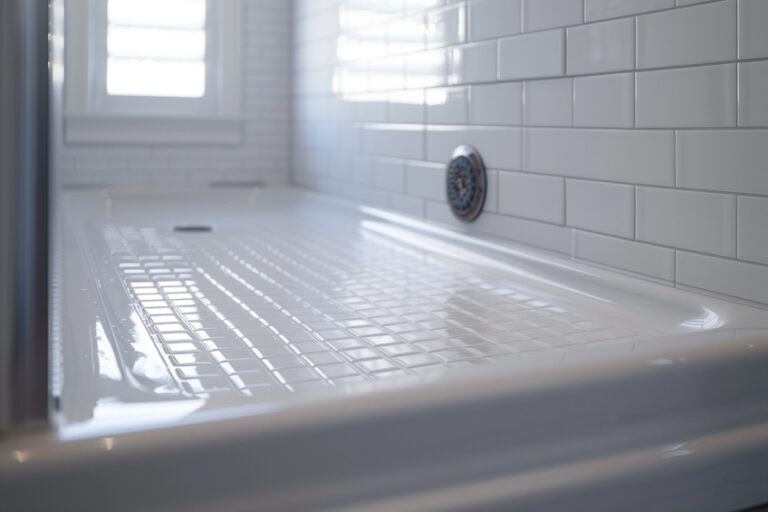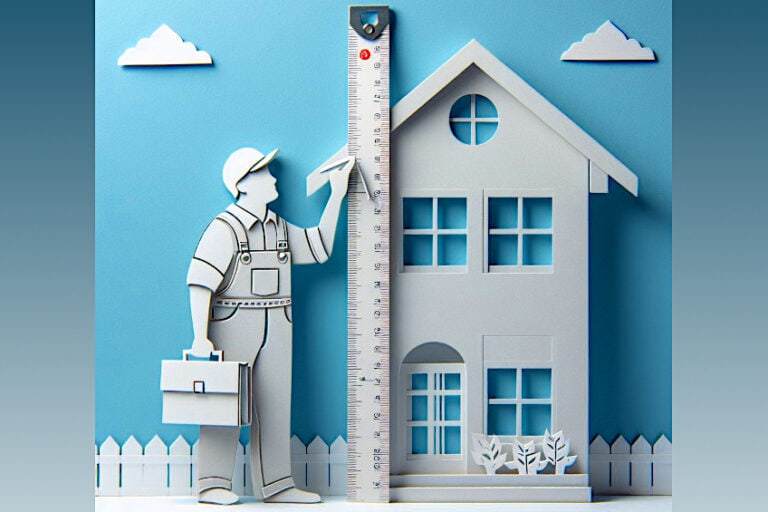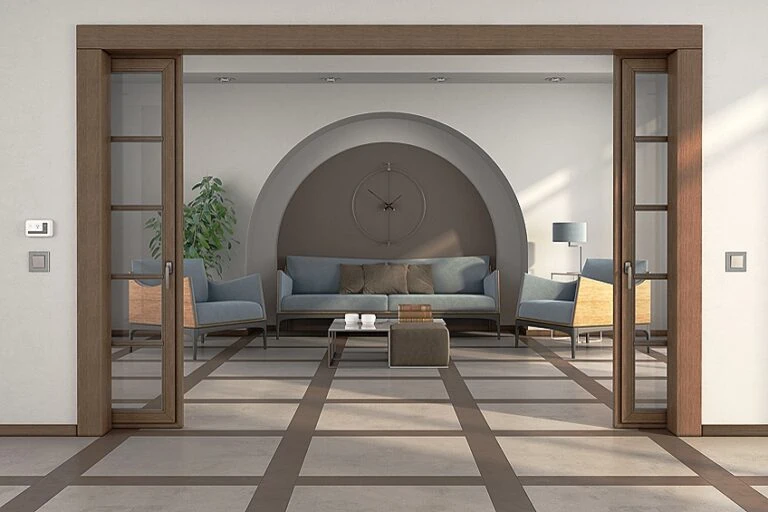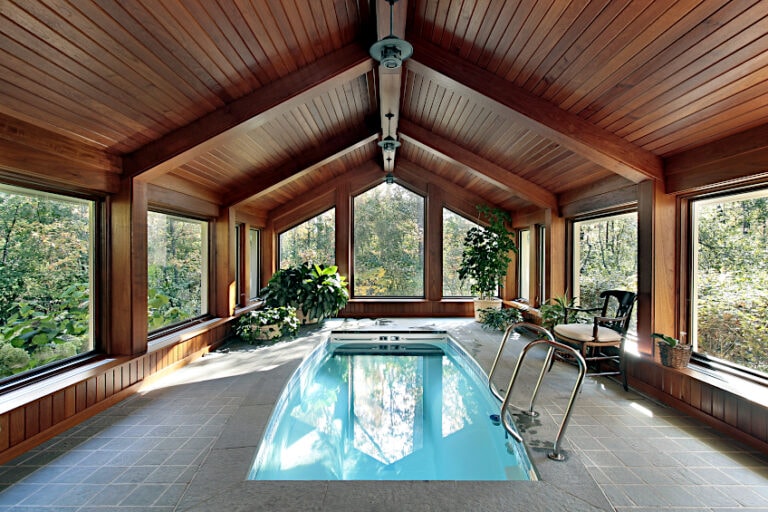Standard Shower Pan Sizes – A Guide to Shower Tray Dimensions
This post may contain affiliate links. We may earn a small commission from purchases made through them, at no additional cost to you.
Whilst standing in a shower, we can bet that the thought of the various standard shower pan sizes has never crossed your mind. Typically, those with a shower, stand on a shower pan every day but usually no attention is paid to it. Thinking about standard shower pan sizes is a topic of discussion when renovating a bathroom or when a new house is built.t When it comes to choosing the best standard show pan sizes, this article will answer most of those pressing questions that you have, regarding shower base sizes and sizes of shower trays. We will also give the standard measurements for standard shower pan sizes that you may wish to purchase for your new bathroom.
Contents
An Introduction to Shower Pans
The shower pan has been around since the early 1970s. Through the years, several changes have been made to the shower pan. Some people use the word “bed” or “tray” rather than “pan” when referring to the shower pan. The shower base is specifically designed to catch and guide the water towards the drain to keep it from pooling in the shower enclosure corners, or overflowing onto the bathroom floor.
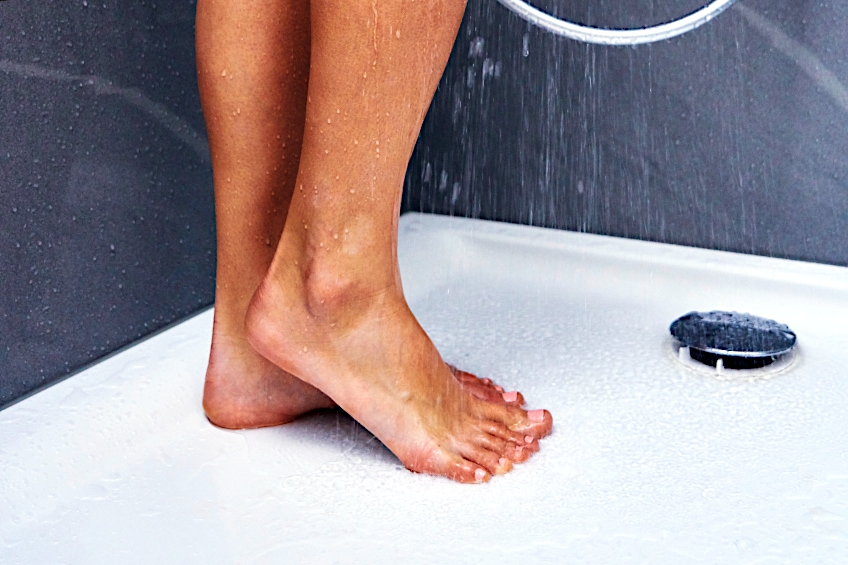
Shower pans are relatively easy to install. An installation kit of various sizes is now available in the marketplace. Whilst the shower pan is easy to install, installing a shower base will take a little more time. Now, when deciding on standard shower pan sizes, there is a large selection from which to choose regarding the size of shower trays and shower base sizes. There are many examples of the different models available on the market, from the cheapest to the most luxurious models.
We will look at the four most popular models and learn about the materials that are needed to make the different shower base sizes.

- Acrylic is a relatively affordable choice for a standard shower pan size and is used to fit into hard-to-fit areas. Shower pans made with an acrylic base can be color customized according to your preference.
- Composite shower pans are manufactured from stone and synthetic polymers. The quality of these shower pans is affordable and is considered a premium product in the market.
- The custom tile shower plan is an elegant option for those who want to change the entire décor design in a bathroom.
- This is a pricier shower pan but worth every penny. The fiberglass shower pan is a low-cost pan and is readily available in any do-it-yourself outlet.
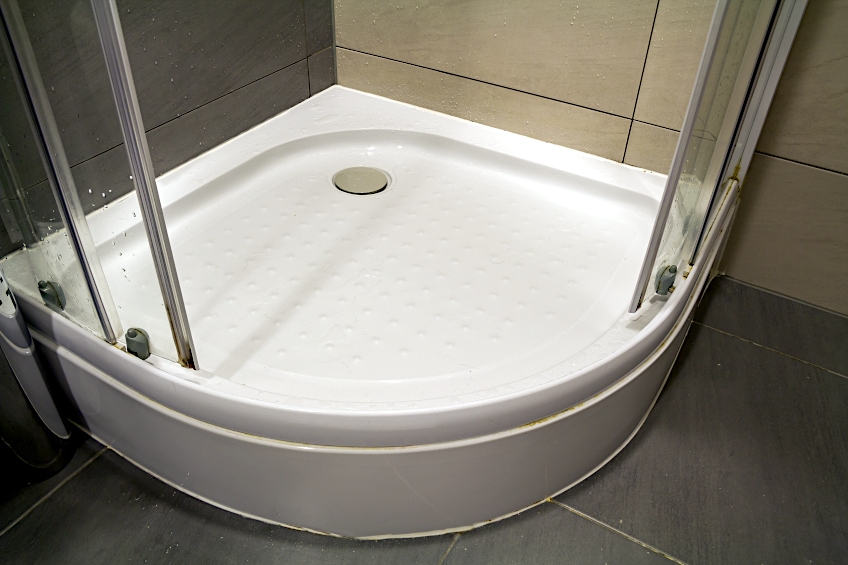
The Advantages of the Shower Pan
The advantages of fitting a shower pan into a bathroom far outweigh the disadvantages. We list the advantages here for easy reference. Instead of looking at installing a new shower, with dread and imagining that this will be just one more chore in the house, the installation of the shower will be exciting. The shower pan is easier to maintain. These showers have a supporting substructure beneath the pan that helps channel the water into the drain, which prevents water seepage.
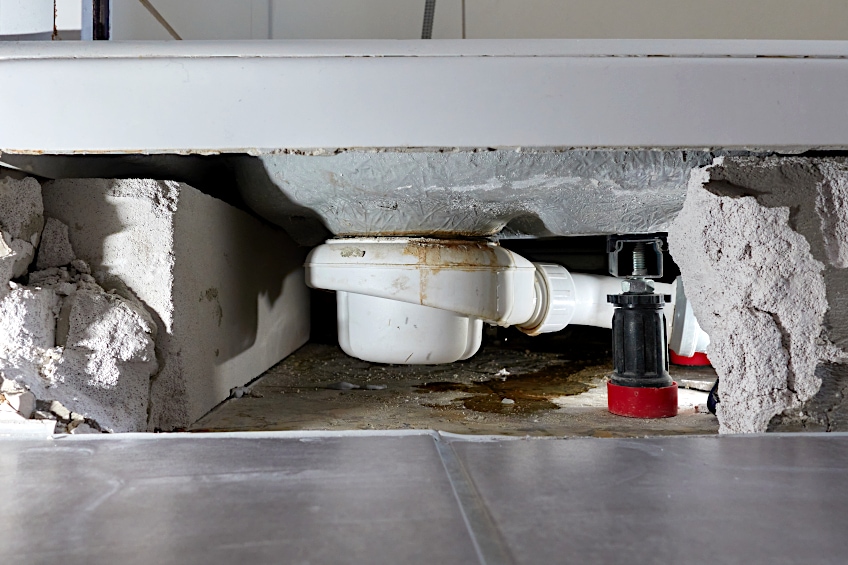
The standard shower pan is leak free and protects from water damage or mold growth. Contractors prefer working with one-piece installations as they are faster to install and no grouting or sealing is required. The gout-free and leak-free shower plan costs much less than tiles. The one-piece system also requires no waterproofing under the pan.
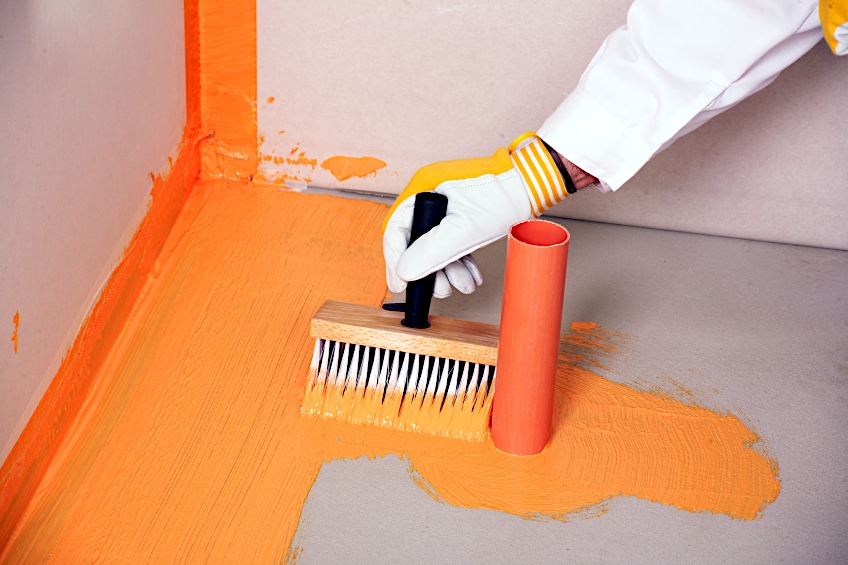
The absence of tile grout on a shower floor means that it is easy to clean and less likely to harbor mold. The standard shower pan sizes are all manufactured with a non-slip floor. One-piece stand shower pan sizes can also be customized to work in your space and fit any requirements. Manufacturers can mold the size of shower trays in almost any size and shape.
The best advantage when choosing the standard shower pan sizes for your bathroom is that they are grout-free and are available almost anywhere in most cities or towns.
How to Measure a Shower Pan Size
The first thing about attempting to build your shower is to make sure that the points below have been taken into consideration. You will also need to accurately measure the shower pan’s outer border. Measure twice just to be sure. The depth of the shower pan must be measured, which means that you need to measure from the top edge to the bottom of the pan.
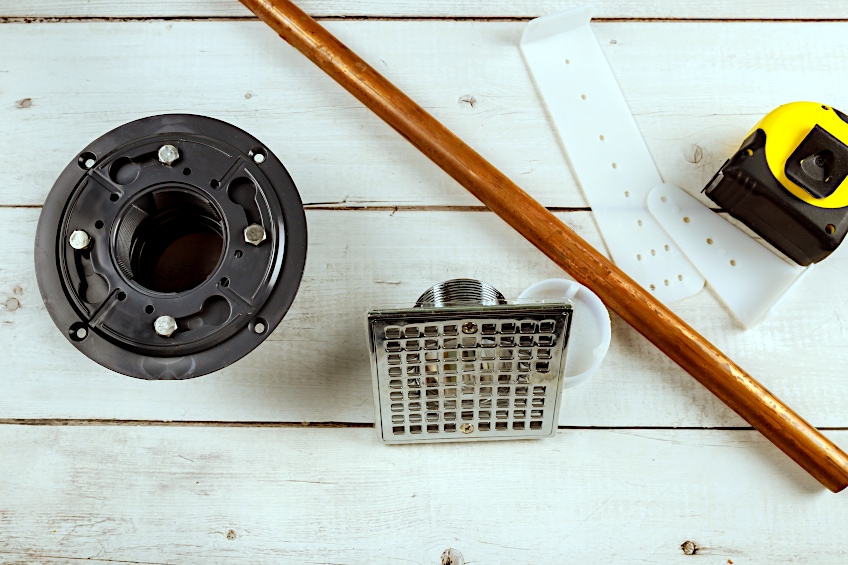
Next, measure the distance from the shower pan’s outside corners. Remember to be careful when installing a shower pan, ensure that you also measure the area where the shower will be placed and ensure that the design you choose will work with the draining system if there is one already in place.

Standard Shower Pan Sizes
Anything varying between 32 x 32 inches up to 42 x 60 inches is the size of a standard shower pan. A neo-angle corner shower pan has a measurement of around 36 to 60 inches. For the smaller bathrooms where there is not a lot of space, the smallest shower pan would work for you. The smallest size is 30 inches.

The depth of a shower pan will range from one inch to at least six inches. The purpose of the shower pan is to ensure that water coming into the shower is directed to the drain. The water will flow into the drain because of how the pan slopes. The slight curve of the shower pan will ensure that water does not seep into the floor.
Shower Base Sizes
When we discuss the shower base sizes, the difference is that a shower base is a structure that will sit underneath a shower pan. The typical shower floor ranges from 32 inches x 36 inches. What is the base of the shower made from? Typically, this is a liner with a layer of mortar. This layer rests on top of the subfloor just beneath the shower pan. Planning a liner or sealant before the mortar will ensure that the subfloor will not get wet. The shower base size will fit into any standard home shower.
Installing a Shower Pan
The question of whether it is possible to install a shower pan is easily answered. It is manageable and could be an excellent Do It Yourself project for the home. When installing a shower pan you should follow a few basic and simple steps. Measuring the space is crucial to ensure that everything will fit. Remember that if you are preparing to install a standard shower pan size, you will require around 32 inches of space.
In order to ensure a good fit, you will also need to take the necessary accurate measurements.
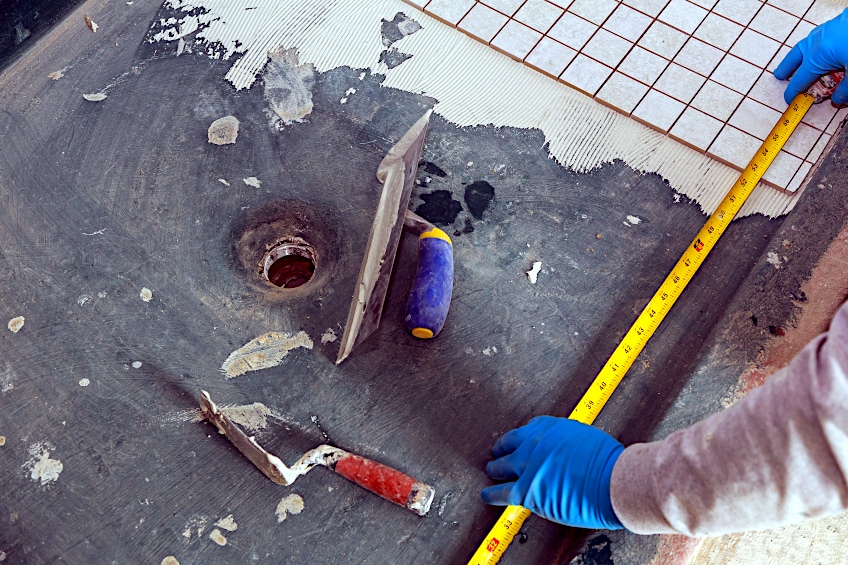
A subfloor has to be prepared to allow the standard shower pan size to sit on it. If you are removing an old pan, ensure that a waterproof pan liner is laid and that the surface is clean before starting. You should not forget about the draining installation. This is important as you will want to ensure that everything is in the correct place and is securely locked in. A good quality adhesive or mortar is to be applied to secure the standard shower pan size. Dry fit the new standard shower pan size ensuring that it is level.
This is achieved, by using two spirit levels on either side of the pan.
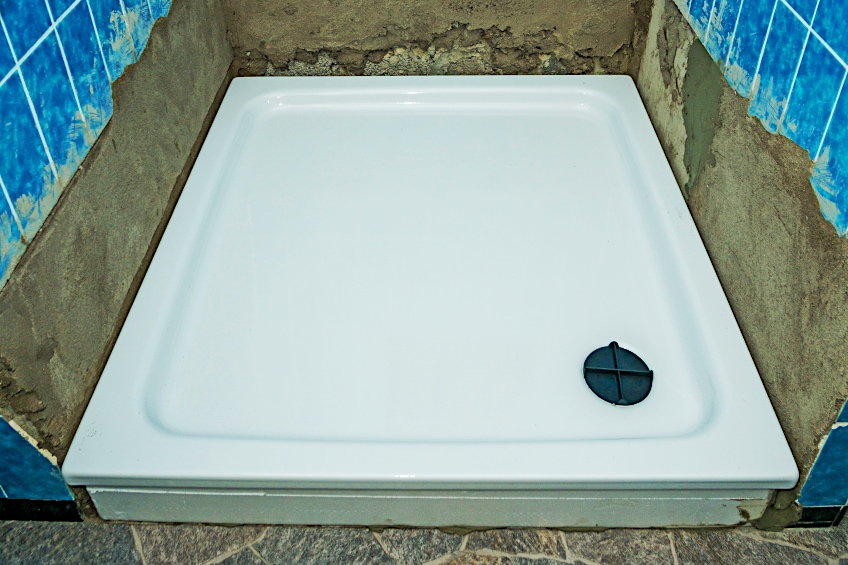
The drain screen and the gasket are easy to install. The rubber gasket can now be placed over the drainpipe. A drain screen is then to be placed on top. Once you have finished installing the standard shower pan size, you should test the shower for leaks. If there are no water leaks, then it’s a job well done, however, small adjustments will need to be made if leaks are detected.
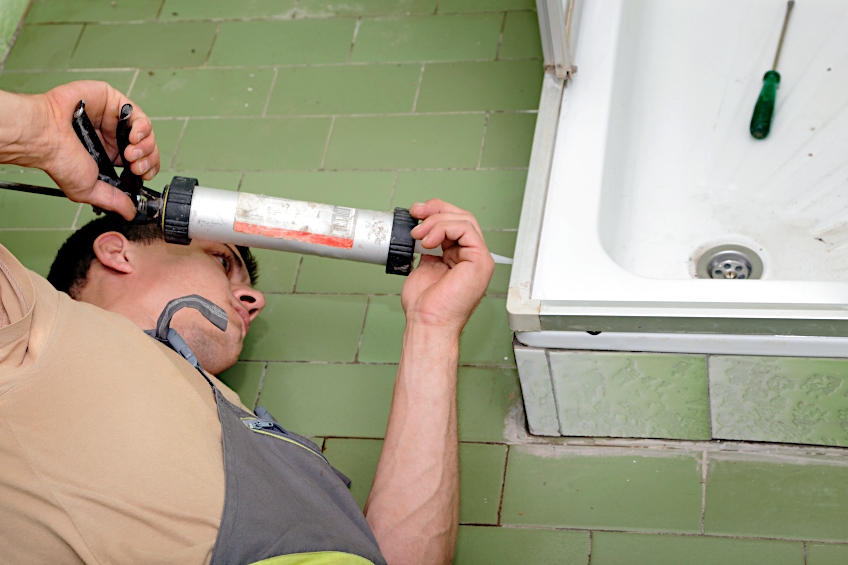
Your bathroom can be completely remodeled and brought up to date by replacing the standard shower pan and shower base. Modern updates can be made in smaller spaces which will make these spaces appear larger. Changing tiles will also add durability to a shower.
Deciding on standard shower pan sizes, shower base sizes, and the size of shower trays should no longer be a nightmare. The process is simple, as with many things in life, if the instructions are carried out, success will also follow. Understanding the difference between standard shower pan sizes and shower base sizes will make the process of installing your first shower so much easier. Good luck with that first build.
Frequently Asked Questions
What Is the Lifespan of a Shower Pan?
This depends on the pan material used. There are so many options in the marketplace and the acrylic standard shower pan sizes will last more than ten years. The tile in the shower may need to be re-grouted during this time.
How Long Do Shower Pans Last?
This will depend on a few factors, but the shower pan material that is used is what will really determine the life of your shower pan. While there are many different options. Acrylic can last for well over ten years and with little maintenance, while tiles can last 15 years, but will likely need re-grouting every few decades. You will have to take care not to cause any cracks as cracks will shorten the shower pan’s lifespan.
Is a Shower Pan Better Than Tiling?
The decision of installing standard shower pan sizes rather than tiling is a personal choice. Cost and availability of space will play a factor in this decision. There are so many different finishes available today that will fit both needs. Just keep in mind that if you opt for tile, you will need to install some form of waterproofing as the tile cement and grout will allow moisture to seep through.
What Is the Standard Shower Pan Size?
Shower pans are available in a wide variety of sizes and custom sizes are even a possibility! That said, the basic standard dimensions for the shower pan vary between 32 x 32 inches up to 42 x 60 inches.


